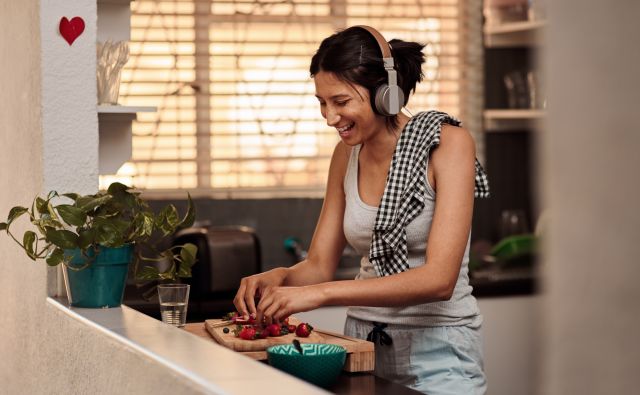Updated on July 18, 2023.
Picture this: The world throws one thing after another at you—work stress, family demands, then a natural disaster—but you effortlessly deflect each challenge in turn. It’s like you have your own pair of Wonder Woman’s bullet-proof bracelets, protecting you no matter what happens.
Resilience often sounds like that sort of shield or superpower, something you either have or you don’t. In reality, it’s more flexible, a form of mental balance that you can practice and develop over time. To do so involves building a foundation of general well-being.
“Your resilience in the face of stress and adversity is inextricably intertwined with your physical health,” says Karin G. Coifman, PhD, professor of psychological science at Kent State University in Kent, Ohio. “You can’t separate those things. Resilience rests on the platform of sleep, exercise, and good nutrition.”
If it were easy enough to eat right, get fit, and sleep well, we might all be on our way to developing more resilience. But during stressful times, nailing down even the basics can be a struggle. Here’s how to start.
Draw motivation from within
When it comes to laying the groundwork for a more resilient life, most of us face the same challenge: finding motivation. The first question to ask is what form of motivation is most effective for you.
“What’s not motivating?” says Gail Gazelle, MD, author of Everyday Resilience: A Practical Guide to Build Inner Strength and Weather Life’s Challenges. "Going to the doctor and being told you’ll get heart disease and die if you don’t eat right and exercise, for one example. This sort of extrinsic motivation, however meaningful it may seem, is not as effective as intrinsic motivation, or being spurred on by what's truly important to you, deep down."
“Many of us are good at being an inner bully to ourselves,” adds Dr. Gazelle, who is also an assistant clinical professor of medicine at Harvard Medical School. “But it just leaves us feeling miserable about ourselves.” Convert that bully into an ally, on the other hand, and you can cultivate the sort of self-kindness that inspires action from within.
Gazelle’s work focuses in large part on helping some of the most stressed-out people on the planet avoid burnout and build resilience: doctors. One of her favorite techniques for finding inner motivation is simple: “Envision who you want to be in the future. Not the bikini-on-the-beach image, but how do you want to feel when you imagine this future self? You probably want to feel good about yourself, to feel healthy.”
Spend a few minutes every morning picturing this future and thinking about what it will take to get there. “Seeing who you want to become is one of the most powerful motivators,” she says.
When you strive toward that ideal outcome, it will feel easier to make proactive, healthy tweaks to your day. That may mean carving out 30 minutes for a walk or an online yoga session, or skipping that glass of wine before bed, knowing that it’s not going to promote the restorative sleep you need to wake up fresh in the morning.
Build on good feelings
There’s a long tradition of doctors, trainers, therapists (and articles) telling us that if you’re feeling bad, all you need to do is something that will make you feel good. Dragging through the day? Just log off from work, put the kids in front of the TV, lace up your shoes and go for a run!
Easier said than, done, right?
The problem, according to Coifman, is that there’s not a lot of evidence that this approach works. “The idea that we can easily jump from feeling bad to motivating to exercise—or doing something else demanding that is good for you—is not supported by research,” she says. “It ultimately may set you up to feel even worse when you don’t succeed.”
Experts in intrinsic motivation suggest a better path. If you feel good doing something, you’re more likely to keep it up because you want to keep feeling good. So, when you’re overwhelmed and need to do something about it, take a moment to consider what simple, healthful action you can reasonably take on.
“If you’re feeling bad, put on a song that makes you happy,” Coifman suggests. “Next thing you know, you might say, ‘I feel a little better, I’ll go for a walk.’”
“You may be starting on a lower rung, but it’s a progressive cycle that motivates you,” she says. “What precedes healthy behaviors are not negative feelings, but positive ones. These positive emotions are the cornerstone of motivation.”
The principle applies to the other pillars of resilience, too. If you want to eat better, make one new healthy recipe a week using foods you love, rather than, say, trying to go vegan overnight. Or start by swapping whole-grain pasta into your favorite lasagna recipe. The key is to build in changes that are attainable, sustainable, and enjoyable.
“During a crisis, we often drop self-care and take ourselves off the to-do list,” says Gazelle. “We need to find a way to give ourselves a daily dose of goodness that is physical, like eating a nutritious meal in the morning or meditating for two to five minutes.”
List habits to toss, activities to add
Yes, healthy habits are essential to developing resilience. But overhauling your diet and sleep and starting an exercise routine all at once is nearly impossible, especially with everything else going on. Start by choosing changes that will give you the most bang for your buck.
“Ask yourself, what are the small things that help you feel strong and solid?” says Gazelle. “What nourishes you? What can you do more of to fill your tank?” Turn that brainstorm into the creation of a simple ‘less’ and ‘more’ list.
To figure out what goes on your ‘less’ list, think about what depletes you and makes it harder to bounce back after a long day. “At the top of that list might be repetitive watching of distressing news reports,” Gazelle says. “And then we wonder why we can’t sleep.” A related item to minimize: indulging people who are negative or who drain your emotional resources.
Coifman has studied the effects of repetitively focusing on negative emotions and experiences. She says this habit “serves to make other kinds of coping and decision-making much more challenging.”
For the ‘more’ list, exercise of any kind goes at the top. “It’s fresh air to the brain and enables us to step out of negative patterns and make better choices,” Coifman explains. “People often report they won’t ruminate as much after exercise.” In this way, physical activity promotes a positive feedback loop: A little movement can help short-circuit downward-spiral thinking, and a burst of positivity makes you more inclined to move more.
Think about other activities that lift you and add them to your list. This could include setting 10 p.m. as your new bedtime so you get enough shut-eye, booking a regular call with a close friend, or scheduling a nightly 15-minute dance party with your family, letting each person have a turn choosing the playlist. (Yes, dancing counts as movement.)
When it comes to acting on the items on the ‘more’ list,” Gazelle has an additional piece of advice: “Be sure to put them on your calendar so they happen. Make that daily dose of goodness non-negotiable, a small thing to fill yourself up that you commit to daily.”






